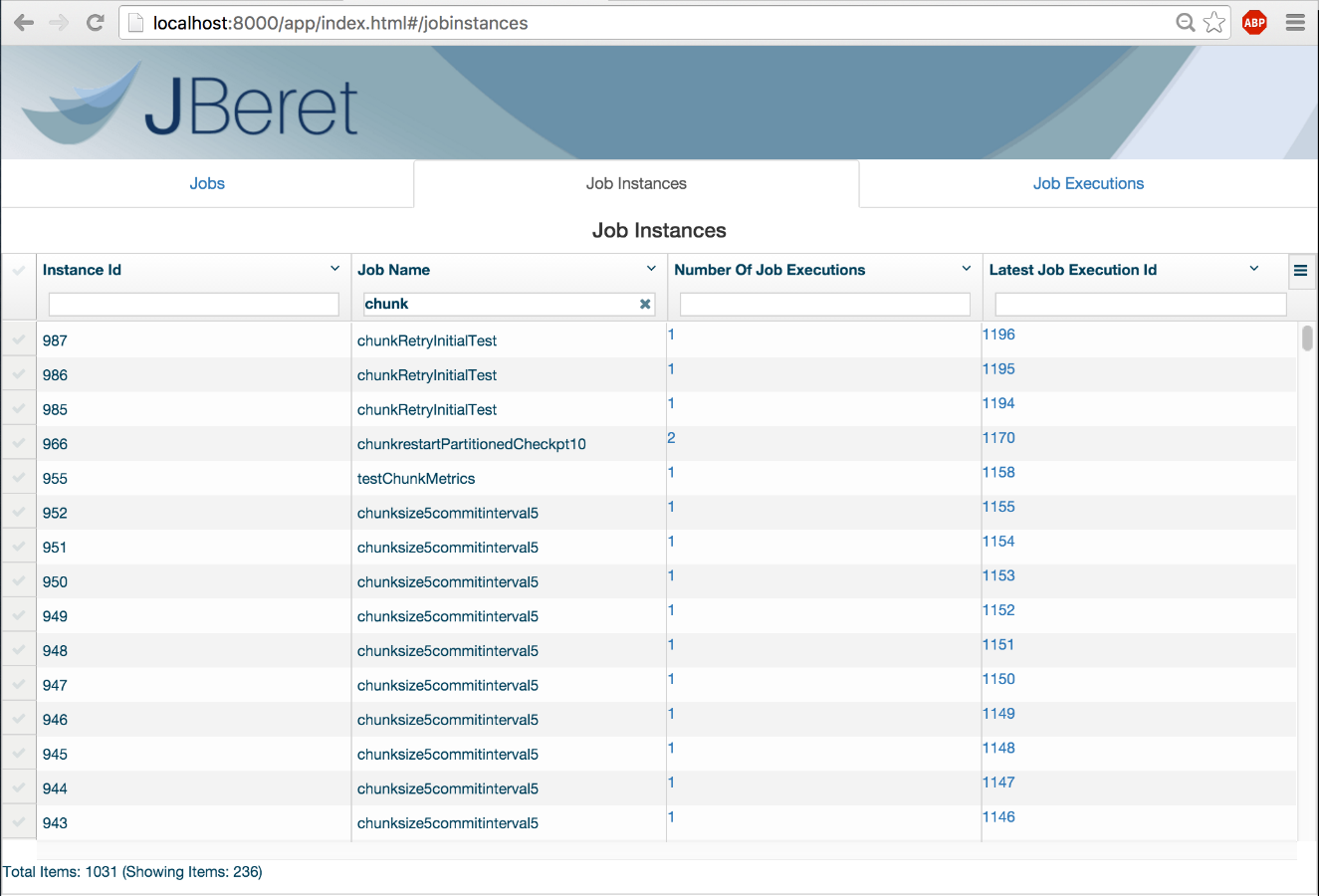JBeret UI
cfang Apr 28, 2016 11:14 PMMany batch applications need a front-end UI to access the batch job repository, display and analyze job data. The purpose of jberet-ui (jsr352/jberet-ui at master · jberet/jsr352 · GitHub) is to provide a set of reusable web components (html, js, css, img, etc) to be included in batch applications. jberet-ui invokes jberet-rest-api https://github.com/jberet/jsr352/tree/master/jberet-rest-api to interact with the target batch runtime. Two primary modes of running jberet-ui:
- packaged into Java EE web application WAR archive file, and access the REST resources in the same application
- hosted on a http server (e.g., node.js) as a stand-alone single-page application (SPA), and access the REST resources deployed in other application server (e.g., WildFly)
jberet-ui has the similar purpose as spring batch admin. JBatch also its own GUI/Web module
How is it different from WildFly admin console batch panel?
- jberet-ui is application-level UI components, while WildFly admin console offers application server admin that includes batch subsystems.
- jberet-ui can be deployed or hosted as part of a web app, or on its own in any http server.
- jberet-ui can be customized by users to fit their own application needs.
- jberet-ui can display more batch job data, while WildFly admin console batch subsystem is constrained by its purpose.
- jberet-ui does not touch any server-side batch subsystem configuration, while WildFly admin console supports viewing and customizing batch subsystem configuration
Features:
- support roughly all operations in the standard JobOperator interface, e.g.,
- given job xml name, and optionally job parameters, start a job
- list recent job names
- list all job instances
- list all job executions
- list details of an individual job execution
- restart, stop, abandon and refresh a job execution
- list details of an individual step execution
- support scheduling job execution:
- scheduleing starting a job
- single-action job schedule
- by exact date & time
- by initial delay minutes
- repeatable job schedule
- by initial delay and interval/period
- by initial delay and subsequent delay
- by ScheduleExpression (only available in EJB-Timer-based job scheduler)
- non-persistent & persistent job schedule
- single-action job schedule
- scheduling restarting a previously failed job execution
- by delay minutes
- by exact date & time
- list job schedules
- refresh job schedule list
- cancel job schedules
- scheduleing starting a job
- provide success alert upon successful outcome of any action, with links to new view if applicable
- provide failure alert upon failed outcome of any action
- provide any form validation (mainly job xml name field)
- support sorting and filtering on most columns of most display grid
- support exporting certain data to CSV or PDF format
Resources:
- jsr352/jberet-ui at master · jberet/jsr352 · GitHub
- jsr352/jberet-rest-api at master · jberet/jsr352 · GitHubJBERET-190
- JBERET-190 Add jberet-ui as the front-end for jberet-rest-api
- [JBERET-225] Add Job Scheduling to jberet-ui - JBoss Issue Tracker
Sample Screens:
More scheduling-related screenshots are in [JBERET-225] Add Job Scheduling to jberet-ui - JBoss Issue Tracker



